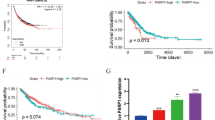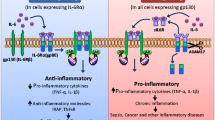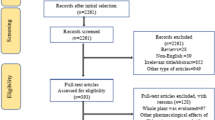Abstract
In an uncontrolled inflammatory environment, the complex process of lung carcinogenesis occurs. Lung cancer remains the leading cause of cancer-related mortality worldwide. The average 5-year survival rate is still low despite significant advancements in our knowledge of lung carcinogenesis and the development of innovative therapies in recent decades. Research on adjuvant treatment, lung carcinogenesis pathways, and possible prognostic indicators has to be refocused using an innovative approach. The majority of lung cancers are discovered at an advanced stage when there is little chance of recovery. It has grown in popularity in recent years to supplement already available chemotherapeutic therapies with adjuvant herbal medications, which may lessen toxicity and adverse effects without sacrificing therapeutic efficiency. One such prospective contender is curcumin. In-depth research has been done on curcumin as a multi-target anti-tumor and anti-inflammatory molecule. A pharmacologically active polyphenol produced from turmeric is called curcumin. Over the past few decades, curcumin’s therapeutic potential has been thoroughly studied, and data indicate that curcumin may play a part in a variety of biological processes, most notably its potent anticancer activity. Being a pleiotropic chemical, curcumin regulates a variety of molecules that are key players in many cell signaling pathways. It has been shown to stifle transformation, restrain proliferation, and trigger apoptosis. Curcumin can reduce the development of non-small cell LC by downregulating Circular RNA hsa_circ_0007580, which in turn controls the expression of integrin subunit beta 1 by adsorbing miR-384. Nevertheless, despite all these advantages, curcumin’s effectiveness is still restricted because of its weak bioavailability, poor absorption within the systemic circulation, and quick removal from the body. In an effort to overcome these constraints, scientists from all around the world are working to develop a synthetic and improved curcuminoid by appropriately altering the parent skeleton structurally. These curcuminoids will simultaneously improve the physicochemical properties and efficacy. This review presents evidence from the most recent clinical trials coupled with the molecular mechanisms of curcumin in LC.
Graphical abstract
Curcumin as inhibitor of multiple signaling pathways expressed in lung cancer










Similar content being viewed by others
Data availability
Any additional data could be available from the corresponding author upon request.
References
Barik A, Mishra B, Shen L, Mohan H, Kadam RM, Dutta S, ... Priyadarsini KI (2005) Evaluation of a new copper (II)–curcumin complex as superoxide dismutase mimic and its free radical reactions. Free Radic Biol Med 39(6):811–822
Barik A, Mishra B, Kunwar A, Kadam RM, Shen L, Dutta S, ... Priyadarsini KI (2007) Comparative study of copper (II)–curcumin complexes as superoxide dismutase mimics and free radical scavengers. Eur J Med Chem 42(4):431–439
Barrera L, Montes-Servín E, Hernandez-Martinez JM, Orozco-Morales M, Montes-Servín E, Michel-Tello D, ... Arrieta O (2018) Levels of peripheral blood polymorphonuclear myeloid-derived suppressor cells and selected cytokines are potentially prognostic of disease progression for patients with non-small cell lung cancer. Cancer Immunol Immunother 67:1393–1406
Baum L, Ng A (2004) Curcumin interaction with copper and iron suggests one possible mechanism of action in Alzheimer’s disease animal models. J Alzheimer’s Dis 6(4):367–377
Bushati N, Cohen SM (2007) microRNA functions. Annu Rev Cell Dev Biol 23:175–205
Cadranel J, Bellocq A, Antoine M, Flahault A, Philippe C, Crestani B, Bernaudin JF, Mayaud C, Milleron B, Baud L (1998) Neutrophil alveolitis in bronchioloalveolar carcinoma e induction by tumor-derived interleukin-8 and relation to clinical outcome. Am J Pathol 152:83–92
Calin GA, Croce CM (2006) MicroRNA signatures in human cancers. Nat Rev Cancer 6(11):857–866
Chen TC, Chuang JY, Ko CY, Kao TJ, Yang PY, Yu CH, ... Hsu TI (2020) AR ubiquitination induced by the curcumin analog suppresses growth of temozolomide-resistant glioblastoma through disrupting GPX4-mediated redox homeostasis. Redox Biol 30:101413
Chen JF, Yan Q (2021) The roles of epigenetics in cancer progression and metastasis. Biochem J 478(17):3373–3393
Constantin N, Sina AAI, Korbie D, Trau M (2022) Opportunities for early cancer detection: the rise of ctDNA methylation-based pan-cancer screening technologies. Epigenomes 6(1):6
Cooper WA, Lam DC, O’Toole SA, Minna JD (2013) Molecular biology of lung cancer. J Thorac Dis 5(Suppl 5):S479
Dai W, Wang H, Fang J, Zhu Y, Zhou J, Wang X, ... Zhou M (2018) Curcumin provides neuroprotection in model of traumatic brain injury via the Nrf2-ARE signaling pathway. Brain Res Bull 140:65–71
Ding YF, Peng ZX, Ding L, Peng YR (2019) Baishouwu extract suppresses the development of hepatocellular carcinoma via TLR4/MyD88/NF-κB pathway. Front Pharmacol 10:389
Dutta B (2015) Study of secondary metabolite constituents and curcumin contents of six different species of genus Curcuma. J Med Plants Stud 3(5):116–119
Edwards RL, Luis PB, Varuzza PV, Joseph AI, Presley SH, Chaturvedi R, Schneider C (2017) The anti-inflammatory activity of curcumin is mediated by its oxidative metabolites. J Biol Chem 292(52):21243–21252
Fortunato O, Boeri M, Verri C, Moro M, Sozzi G (2014) Therapeutic use of microRNAs in lung cancer. BioMed Res Int 2014:756975
Gelfo V, Mazzeschi M, Grilli G, Lindzen M, Santi S, D’uva G, ... Lauriola M (2018). A novel role for the interleukin-1 receptor axis in resistance to anti-EGFR therapy. Cancers 10(10):355
Georgiou A, Stewart A, Cunningham D, Banerji U, Whittaker SR (2020) Inactivation of NF1 promotes resistance to EGFR inhibition in KRAS/NRAS/BRAFV600-wild-type colorectal cancer. Mol Cancer Res 18(6):835–846
Gregory AD, Houghton AM (2011) Tumor-associated neutrophils: new targets for cancer therapy. Cancer Res 71:2411–2416
Guerrero‐Hue M, García‐Caballero C, Palomino‐Antolín A, Rubio‐Navarro A, Vázquez‐Carballo C, Herencia C, ... Moreno JA (2019). Curcumin reduces renal damage associated with rhabdomyolysis by decreasing ferroptosis‐mediated cell death. FASEB J 33(8):8961-8975
Ha M, Kim VN (2014) Regulation of microRNA biogenesis. Nat Rev Mol Cell Biol 15(8):509–524
Holdgate GA, Bardelle C, Lanne A, Read J, O’Donovan DH, Smith JM, ... Sheppard R (2022) Drug discovery for epigenetics targets. Drug Discov Today 27(4):1088–1098
Hou W, Xie Y, Song X, Sun X, Lotze MT, Zeh III HJ, ... Tang D (2016) Autophagy promotes ferroptosis by degradation of ferritin. Autophagy 12(8):1425–1428
Houghton AM, Rzymkiewicz DM, Ji H, Gregory AD, Egea EE, Metz HE, Stolz DB et al (2010) Neutrophil elastase-mediated degradation of IRS-1 accelerates lung tumor growth. Nat Med 16:219–224
Huang J, Lan X, Wang T, Lu H, Cao M, Yan S, ... Xing Y (2020) Targeting the IL-1β/EHD1/TUBB3 axis overcomes resistance to EGFR-TKI in NSCLC. Oncogene 39(8):1739–1755
Ichiki K, Mitani N, Doki Y, Hara H, Misaki T, Saiki I (2000) Regulation of activator protein-1 activity in the mediastinal lymph node metastasis of lung cancer. Clin Exp Metas 18:539–545
Inamura K, Ishikawa Y (2016) MicroRNA in lung cancer: novel biomarkers and potential tools for treatment. J Clin Med 5(3):36
Jemal A, Siegel R, Ward E, Hao Y, Xu J, Thun MJ (2009) Cancer statistics, 2009. CA Cancer J Clin 59(4):225–249
Jiang A, Wang X, Shan X, Li Y, Wang P, Jiang P, Feng Q (2015) Curcumin reactivates silenced tumor suppressor gene RARβ by reducing DNA methylation. Phytother Res 29(8):1237–1245
Karati D, Varghese R, Mahadik KR, Sharma R, Kumar D (2022) Plant bioactives in the treatment of inflammation of skeletal muscles: a molecular perspective. Evid Based Complement Alternat Med 2022:4295802
Karati D, Kumar D (2022) Exploring the structural and functional requirements of phyto-compounds and their synthetic scaffolds as anticancer agents: medicinal chemistry perspective. Pharmacol Res-Mod Chin Med 4:100123
Koiram PR, Veerapur VP, Kunwar A, Mishra B, Barik A, Priyadarsini IK, Mazhuvancherry UK (2007) Effect of curcumin and curcumin copper complex (1: 1) on radiation-induced changes of anti-oxidant enzymes levels in the livers of Swiss albino mice. J Radiat Res 48(3):241–245
Koliaraki V, Chalkidi N, Henriques A, Tzaferis C, Polykratis A et al (2019) Innate sensing through mesenchymal TLR4/MyD88 signals promotes spontaneous intestinal tumorigenesis. Cell Rep 26(3):536-545.e534
Kong H, Wang Y, Zeng X, Wang Z, Wang H, Xie W (2015) Differential expression of inflammasomes in lung cancer cell lines and tissues. Tumor Biol 36:7501–7513
Kunwar A, Narang H, Priyadarsini KI, Krishna M, Pandey R, Sainis KB (2007) Delayed activation of PKCδ and NFκB and higher radioprotection in splenic lymphocytes by copper (II)–Curcumin (1: 1) complex as compared to curcumin. J Cell Biochem 102(5):1214–1224
Kyritsis AP, Bondy ML, Levin VA (2011) Modulation of glioma risk and progression by dietary nutrients and antiinflammatory agents. Nutr Cancer 63(2):174–184
Lambrechts D, Wauters E, Boeckx B, Aibar S, Nittner D, Burton O, ... Thienpont B (2018) Phenotype molding of stromal cells in the lung tumor microenvironment. Nate Med 24(8):1277-1289
Leung MHM, Harada T, Kee TW (2013) Delivery of curcumin and medicinal effects of the copper (II)-curcumin complexes. Curr Pharm Des 19(11):2070-2083
Li R., Ong SL, Tran LM, Jing Z, Liu B, Park SJ, ... Dubinett S (2020a) Chronic IL-1β-induced inflammation regulates epithelial-to-mesenchymal transition memory phenotypes via epigenetic modifications in non-small cell lung cancer. Sci Rep 10(1):377.
Li R, Zhang J, Zhou Y, Gao Q, Wang R, Fu Y, Zheng L, Yu H (2020b) Transcriptome investigation and in vitro verification of curcumin-induced HO-1 as a feature of ferroptosis in breast cancer cells. Oxid Med Cell Longev 2020:3469840. https://doi.org/10.1155/2020/3469840
Lu J, Getz G, Miska EA, Alvarez-Saavedra E, Lamb J, Peck D, ... Golub TR (2005) MicroRNA expression profiles classify human cancers. Nature 435(7043):834-838
Lungarella G, Cavarra E, Lucattelli M, Martorana PA (2008) The dual role of neutrophil elastase in lung destruction and repair. Int J Biochem Cell Biol 40:1287–1296
Mehta HJ, Patel V, Sadikot RT (2014) Curcumin and lung cancer—a review. Target Oncol 9:295–310
Memon H, Patel BM (2019) Immune checkpoint inhibitors in non-small cell lung cancer: a bird’s eye view. Life Sci 233:116713
O’Callaghan DS, O’Donnell D, O’Connell F, O’Byrne KJ (2010) The role of inflammation in the pathogenesis of non-small cell lung cancer. J Thorac Oncol 5(12):2024–2036
Pavan AR, Silva GDBD, Jornada DH, Chiba DE, Fernandes GFDS, Man Chin C, Dos Santos JL (2016) Unraveling the anticancer effect of curcumin and resveratrol. Nutrients 8(11):628
Priyadarsini KI (2014) The chemistry of curcumin: from extraction to therapeutic agent. Molecules 19(12):20091–20112
Ramalingam SS, Owonikoko TK, Khuri FR (2011) Lung cancer: new biological insights and recent therapeutic advances. CA Cancer J Clin 61(2):91–112
Rocks N, Bekaert S, Coia I, Paulissen G, Guéders M, Evrard B, ... Cataldo D (2012) Curcumin–cyclodextrin complexes potentiate gemcitabine effects in an orthotopic mouse model of lung cancer. Br J Cancer 107(7):1083–1092
Rodrigues FC, Kumar NA, Thakur G (2019) Developments in the anticancer activity of structurally modified curcumin: an up-to-date review. Eur J Med Chem 177:76–104
Saijo Y, Tanaka M, Miki M, Usui K, Suzuki T, Maemondo M, ... Nukiwa T (2002) Proinflammatory cytokine IL-1β promotes tumor growth of Lewis lung carcinoma by induction of angiogenic factors: in vivo analysis of tumor-stromal interaction. J Immunol 169(1):469–475
Salehi M, Movahedpour A, Tayarani A, Shabaninejad Z, Pourhanifeh MH et al (2020) Therapeutic potentials of curcumin in the treatment of non-small-cell lung carcinoma. Phytother Res 34(10):2557–2576
Sekido Y, Fong KM, Minna JD (2003) Molecular genetics of lung cancer. Annu Rev Med 54(1):73–87
Shah D, Gandhi M, Kumar A, Cruz-Martins N, Sharma R, Nair S (2023) Current insights into epigenetics, noncoding RNA interactome and clinical pharmacokinetics of dietary polyphenols in cancer chemoprevention. Crit Rev Food Sci Nutr 63(12):1755–1791
Shaik NA, Al-Kreathy HM, Ajabnoor GM, Verma PK, Banaganapalli B (2019) Molecular designing, virtual screening and docking study of novel curcumin analogue as mutation (S769L and K846R) selective inhibitor for EGFR. Saudi J Biol Sci 26(3):439–448
Shao Q, Jiang C, Xia Y, Zhao M, Zhang Q, Jin B, Liu J (2019) Dioscin ameliorates peritoneal fibrosis by inhibiting epithelial-to- mesenchymal transition of human peritoneal mesothelial cells via the TLR4/MyD88/NF-kappaB signaling pathway. Int J Clin Exp Pathol 12(3):867–875
Shehzad A, Wahid F, Lee YS (2010) Curcumin in cancer chemoprevention: molecular targets, pharmacokinetics, bioavailability, and clinical trials. Arch Pharm 343(9):489–499
Singh AK, Sharma N, Ghosh M, Park YH, Jeong DK (2017) Emerging importance of dietary phytochemicals in fight against cancer: role in targeting cancer stem cells. Crit Rev Food Sci Nutr 57(16):3449–3463
Smagurauskaite G, Mahale J, Brown K, Thomas AL, Howells LM (2020) New paradigms to assess consequences of long-term, low- dose curcumin exposure in lung cancer cells. Molecules 25(2):366
Tang X, Ding H, Liang M, Chen X, Yan Y, Wan N, ... Cao J (2021) Curcumin induces ferroptosis in non‐small‐cell lung cancer via activating autophagy. Thorac Cancer 12(8):1219–1230
Thomas RK, Baker AC, DeBiasi RM, Winckler W, LaFramboise T, Lin WM, ... Garraway LA (2007) High-throughput oncogene mutation profiling in human cancer. Nat Genet 39(3):347–351
Ting CY, Wang HE, Yu CC, Liu HC, Liu YC, Chiang IT (2015) Curcumin triggers DNA damage and inhibits expression of DNA repair proteins in human lung cancer cells. Anticancer Res 35(7):3867–3873
Torii S, Shintoku R, Kubota C, Yaegashi M, Torii R, Sasaki M, ... Yamada K (2016) An essential role for functional lysosomes in ferroptosis of cancer cells. Biochem J 473(6):769–777
Tsai JR, Liu PL, Chen YH, Chou SH, Cheng YJ, Hwang JJ et al (2015) Curcumin inhibits non-small cell lung cancer cells metastasis through the adiponectin/NF-κb/MMPs signaling pathway. PLoS ONE 10(12):e0144462
Vajragupta O, Boonchoong P, Watanabe H, Tohda M, Kummasud N, Sumanont Y (2003) Manganese complexes of curcumin and its derivatives: evaluation for the radical scavenging ability and neuroprotective activity. Free Radical Biol Med 35(12):1632–1644
Vajragupta O, Boonchoong P, Berliner LJ (2004) Manganese complexes of curcumin analogues: evaluation of hydroxyl radical scavenging ability, superoxide dismutase activity and stability towards hydrolysis. Free Radical Res 38(3):303–314
Voigt C, May P, Gottschlich A, Markota A, Wenk D, Gerlach I, ... Kobold S (2017) Cancer cells induce interleukin-22 production from memory CD4+ T cells via interleukin-1 to promote tumor growth. Proc Natl Acad Sci 114(49):12994–12999
Wan Mohd Tajuddin WNB, Lajis NH, Abas F, Othman I, Naidu R (2019) Mechanistic understanding of curcumin’s therapeutic effects in lung cancer. Nutrients 11(12):2989
Wang WH, Chen J, Zhang BR, Lu SJ, Wang F, Peng L, ... Sun YZ (2018) Curcumin inhibits proliferation and enhances apoptosis in A549 cells by downregulating lncRNA UCA1. Die Pharmazie-An Int J Pharm Sci 73(7):402–407
Watari K, Shibata T, Kawahara A, Sata KI, Nabeshima H, Shinoda A, ... Ono M (2014) Tumor-derived interleukin-1 promotes lymphangiogenesis and lymph node metastasis through M2-type macrophages. PLoS ONE 9(6):e99568
Weinstein IB (2008) Oncogene addiction. Cancer Res 68:3077-3080
Weir BA, Woo MS, Getz G, Perner S, Ding L, Beroukhim R, ... Meyerson M (2007) Characterizing the cancer genome in lung adenocarcinoma. Nature 450(7171):893–898
Wu MF, Huang YH, Chiu LY, Cherng SH, Sheu GT, Yang TY (2022) Curcumin induces apoptosis of chemo resistant lung cancer cells via ROS-regulated p38 MAPK phosphorylation. Int J Mol Sci 23:8248
Wu X, Chen H, Liu NA, Liu S, Lin G (2023) Curcumin suppresses lung cancer progression via circRUNX1 mediated miR-760/RAB3D axis. Thorac Cancer 14:506–516
Xu X, Zhang X, Zhang Y, Wang Z (2021) Curcumin suppresses the malignancy of non-small cell lung cancer by modulating the circ-PRKCA/miR-384/ITGB1 pathway. Biomed Pharmacother 138:111439
Xu Y, Zhang J, Han J, Pan X, Cao Y, Guo H, ... Li X (2012) Curcumin inhibits tumor proliferation induced by neutrophil elastase through the upregulation of α1-antitrypsin in lung cancer. Mol Oncol 6(4):405–417
Yano S, Nokihara H, Yamamoto A, Goto H, Ogawa H, Kanematsu T, ... Sone S (2003) Multifunctional interleukin‐1β promotes metastasis of human lung cancer cells in SCID mice via enhanced expression of adhesion‐, invasion‐and angiogenesis‐related molecules. Cancer Sci 94(3):244–252
Ye MX, Li Y, Yin H, Zhang J (2012) Curcumin: updated molecular mechanisms and intervention targets in human lung cancer. Int J Mol Sci 13(3):3959–3978
Zhang Z, Yi P, Tu C, Zhan J, Jiang L, Zhang F (2019) Curcumin inhibits ERK/c-Jun expressions and phosphorylation against endometrial carcinoma. Biomed Res Int 2019:8912961
Zoi V, Galani V, Lianos GD, Voulgaris S, Kyritsis AP, Alexiou GA (2021) The role of curcumin in cancer treatment. Biomedicines 9(9):1086
Zou Y, Palte MJ, Deik AA, Li H, Eaton JK, Wang W, ... Schreiber SL (2019) A GPX4-dependent cancer cell state underlies the clear-cell morphology and confers sensitivity to ferroptosis. Nat Commun 10(1):1617
Acknowledgements
Not applicable.
Funding
None.
Author information
Authors and Affiliations
Contributions
S.R, and S.W.M designed the concept. D.K wrote the paper and prepared all figures. All authors reviewed the manuscript. The authors confirm that no paper mill and artificial intelligence was used.
Corresponding author
Ethics declarations
Ethics approval
Not applicable.
Consent to participate
Not applicable.
Consent for publication
Not applicable.
Competing interests
The authors declare no competing interests.
Additional information
Publisher's Note
Springer Nature remains neutral with regard to jurisdictional claims in published maps and institutional affiliations.
Rights and permissions
Springer Nature or its licensor (e.g. a society or other partner) holds exclusive rights to this article under a publishing agreement with the author(s) or other rightsholder(s); author self-archiving of the accepted manuscript version of this article is solely governed by the terms of such publishing agreement and applicable law.
About this article
Cite this article
Karati, D., Mukherjee, S. & Roy, S. Deciphering the molecular mechanistic paths describing the chemotherapeutic potential and epigenetic regulation of curcumin in lung cancer: a mini review. Naunyn-Schmiedeberg's Arch Pharmacol (2023). https://doi.org/10.1007/s00210-023-02838-2
Received:
Accepted:
Published:
DOI: https://doi.org/10.1007/s00210-023-02838-2




